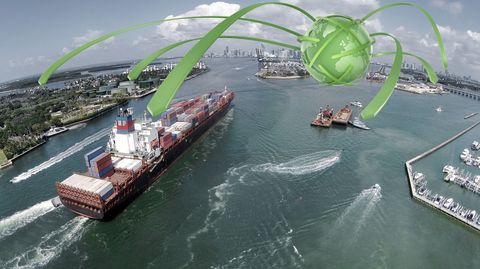The recent slowdown of the global economy has created a strong appetite among European businesses to seek out new sources of potential growth and untapped markets to which they can export their goods and services.
For many companies, this has meant a renewed focus on Asia. Traditional Asian powerhouses such as China and Japan have not been immune to the recent downturn, but there remain a large number of territories in the region where profits have continued to climb, with many of these countries being members of the Association of Southeast Asian Nations (ASEAN).
As such, more and more EU businesses are preparing to invest a considerable amount in their dealings with ASEAN member nations, with many seeing this as a key strategic goal. Interest in a broadened economic and trade relationship between the EU and ASEAN, therefore, has perhaps never been higher.
A clear opportunity for growth
A recent report from the EU-ASEAN Business Council has shed further light on the growing commercial importance of the ASEAN bloc, which consists of Brunei, Cambodia, Indonesia, Laos, Malaysia, Myanmar, the Philippines, Singapore, Thailand and Vietnam.
Speaking to more than 200 executives from European companies with operations in south-east Asia, it was shown that 74 per cent of businesses project a rise in ASEAN profits for 2016, while 74 per cent expect ASEAN's importance to global revenues to increase over the next five years.
The EU is already ASEAN's largest source of foreign direct investment and second-largest trading partner after China, but there is still plenty of scope for growth in this regard. Indeed, nearly two-thirds of the companies polled in this report plan to expand their operations and job creation in ASEAN countries, while 85 per cent are planning to increase their regional trade and investment. By contrast, less than half of European companies in China are planning to expand.
Donald Kanak, chairman of the EU-ASEAN Business Council, said: "It is clear that European business are optimistic and are investing for future growth in ASEAN. At a challenging time for the global economy, south-east Asia is an economic bright spot, and European companies are keen to invest in the region's rapidly developing consumer market and increasingly integrated production base."
The need for a redefined EU-ASEAN trade relationship
However, to make good on this potential, a number of key administrative obstacles and policy challenges need to first be addressed through cooperative discussions between the two economic blocs.
Currently, more than half - 52 per cent - of European businesses say that ASEAN-specific trade barriers are hampering their supply chain efficiency, while 44 per cent of EU firms say they are facing unfair competition from local and regional businesses, including state-owned and government-linked enterprises.
These are all problems that could be addressed by negotiating a new trade deal, a step that many European companies are keen to see. Negotiations for a EU-ASEAN FTA were launched in 2007, but were paused in 2009 to make way for bilateral trade deal talks with individual members states that would act as building blocks towards a future region-to-region agreement.
When surveyed on the prospect by the EU-ASEAN Business Council, 66 per cent of companies said they want a European region-to-region free trade agreement (FTA) with ASEAN, with 58 per cent feeling they will be at a competitive disadvantage without such an agreement coming into force.
Next steps?
Responding to these findings, the EU-ASEAN Business Council is calling for industry and government representatives to work together to form closer economic ties between the two regions, with the ultimate goal of securing a mutually beneficial FTA.
Specifically, the council wants a speedier conclusion to existing bilateral FTA negotiations, as well as more frequent and regular interactions between EU and ASEAN governments and the private sector, plus continued progress on trade liberalization discussions among ASEAN member states and their external trading partners.
EU-ASEAN Business Council executive director Mr Chris Humphrey said: "The EU-ASEAN Business Council is encouraged by European companies' firm support for a high-quality, 21st century region-to-region FTA, and we are committed to working with the European Commission and ASEAN national governments to make this goal a reality."






